Learning how to make a smoothie is easy once you know a few basics. Making your own smoothies at home is the perfect way to ensure you are meeting your daily nutritional needs.
Buying supermarket made smoothies can still be beneficial, but they will never be as fresh as homemade ones.
Making your own smoothie recipes means you can get creative with what you make, and best of all, you know exactly what is going in your cup!
Making a smoothie is simple. Once you have a blender all you need to do is prepare your ingredients, put them in the cup and press ‘on.’
But if you are new to the world of smoothie making, read on to find out everything you could possibly need to know!
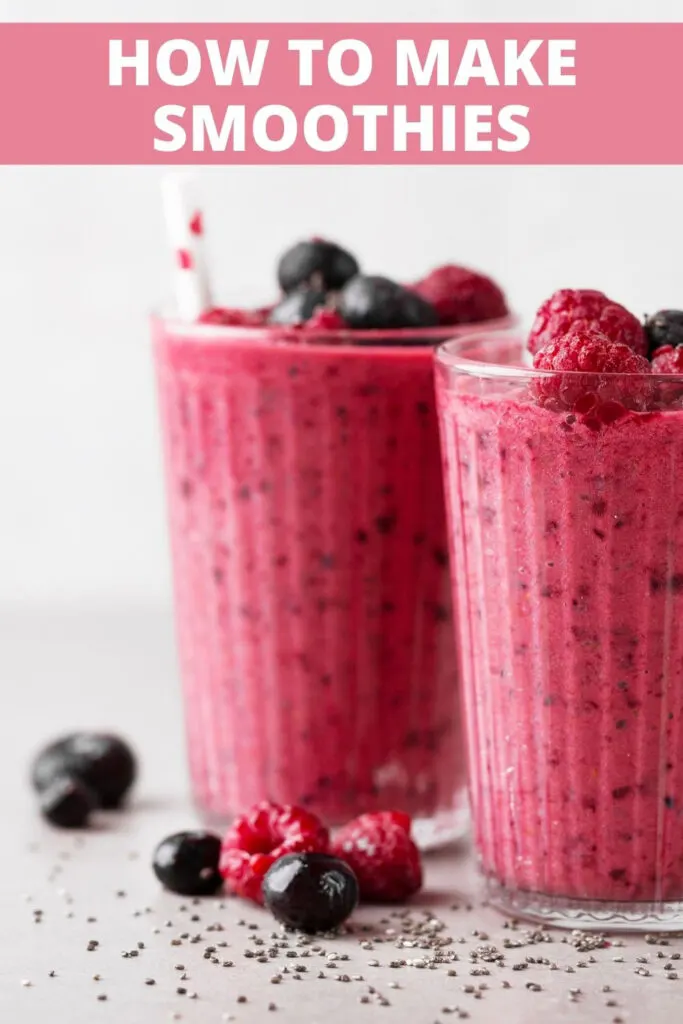
How To Make Smoothies
Smoothies are a great way to enjoy a nutritious and delicious snack or meal. They are also a great way to get in some extra fruits and vegetables.
The following steps will show you how you can easily make a fresh smoothie at home with minimal fuss.
What You Need To Make A Smoothie
The ingredients and equipment needed to make a smoothie at home are;
- Fruit
- Vegetables
- Liquid
- Nuts/seeds
- Protein (optional)
- Sweetener
- Herbs or spices
- Blender
Best Fruit For Smoothies
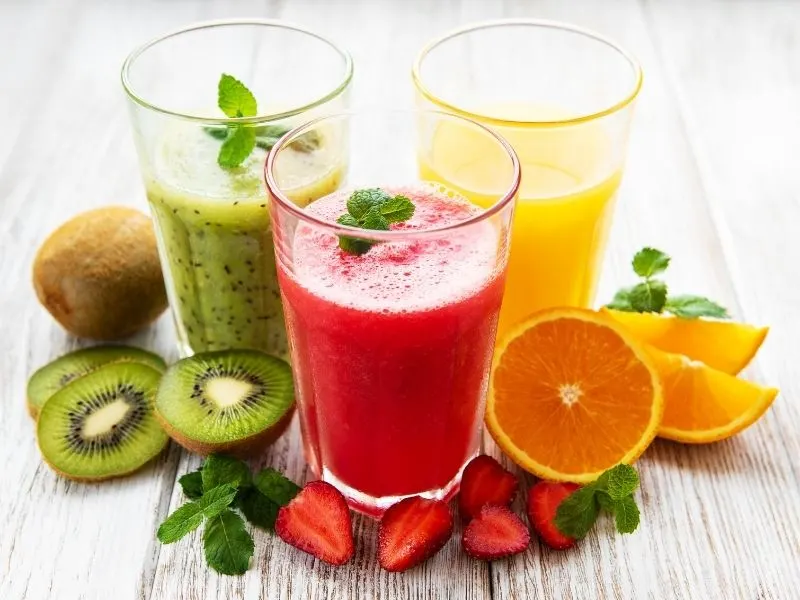
There are endless possibilities when it comes to choosing fruit for your smoothie. Some of our favourites include bananas, strawberries, raspberries, blueberries, and mangoes.
Other options could include apples, pineapple and pears.
You can use fresh or frozen fruit in your smoothie, and we recommend using a mix of both for the best consistency.
Frozen fruit will make your smoothie thicker and colder, while fresh fruit will make it smoother and more refreshing.
Best Vegetables For Smoothies
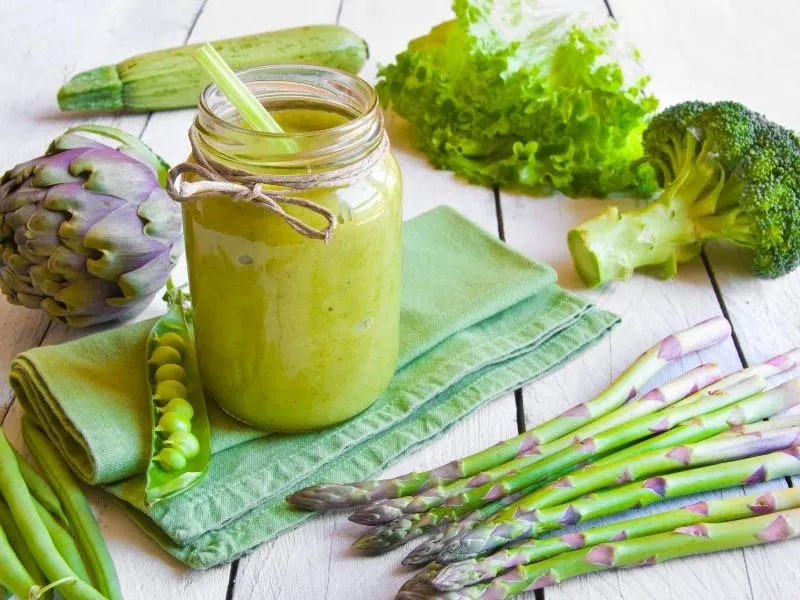
Just like with fruit, there are endless possibilities when it comes to choosing vegetables for your smoothie. Our favourite vegetables to use in smoothies include spinach, kale, carrots, and beetroot.
Best Liquid For Smoothies
When it comes to making smoothies, there are a lot of different liquids you can use.
Water, milk, and juice are all common choices, but each one will affect the flavour and texture of your smoothie in different ways.
Water is the most basic option, but it will make your smoothie thinner and less sweet.
Milk will add protein and fat, making your smoothie more filling, but it can also make it rich and heavy.
You can use any type of milk in your smoothie, but we prefer almond milk or coconut milk. These kinds of milk are naturally sweet and add a delicious flavour to your smoothie.
Juice is full of flavour and sweetness, but it can also make your smoothie too thin and sweet if you use too much. Juice flavours could include orange, pineapple, mango, or grapefruit.
Adding Nuts and Seeds To Smoothies
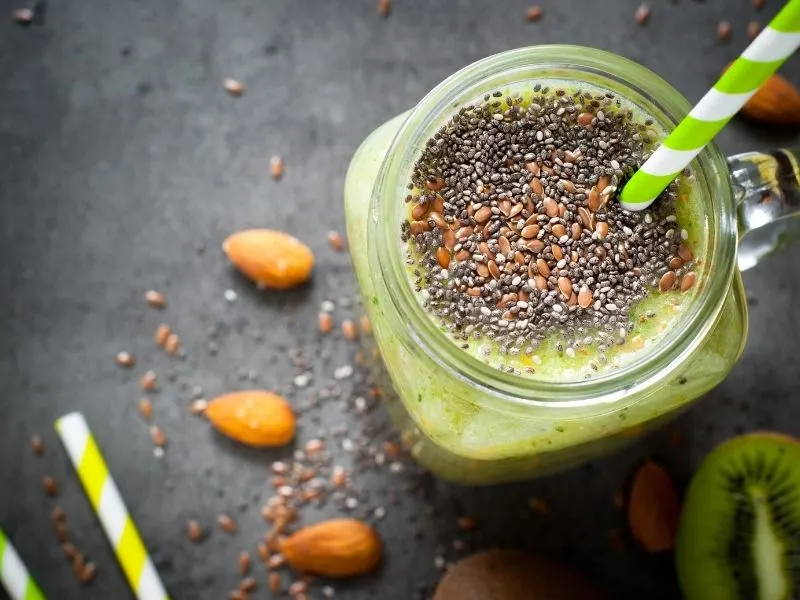
If you’re looking for a way to add more nutrition and flavour to your smoothies, consider adding nuts and seeds.
Just a handful of nuts or seeds can give your smoothie a boost of protein, fibre, healthy fats, vitamins, and minerals.
Not to mention, they can also add a delicious nutty or crunchy texture.
When choosing nuts and seeds for your smoothie, opt for raw or roasted varieties that are unsalted and free from added sugar.
Almonds, ground flaxseed, chia seeds, and hemp seeds are all excellent additions to any smoothie.
Just be sure to start with a small amount and increase the amount gradually to avoid overloading your blender. Experiment until you find the perfect combination of ingredients for your smoothie.
Adding Protein In Smoothies
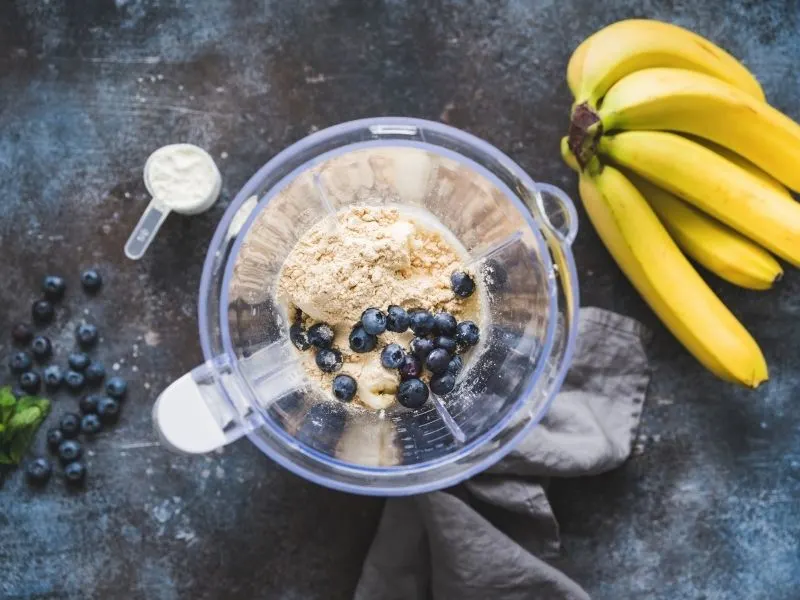
Adding protein to a smoothie helps to build and repair muscles, and it can also help you to feel fuller for longer.
There are many ways to add protein to a smoothie, including using protein powder, adding Greek yoghurt, or using a nut butter.
Each of these ingredients provides a different type of protein, so experiment to find the combination that works best for you.
Adding protein to your smoothie will not only make it more nutritious but will also give it a thicker, creamier texture. So if you’re looking for a quick and easy way to boost your protein intake, try adding some to your next smoothie.
You might also like: Cucumber, Pineapple and Avocado Smoothie
How To Make A Smoothie Sweeter
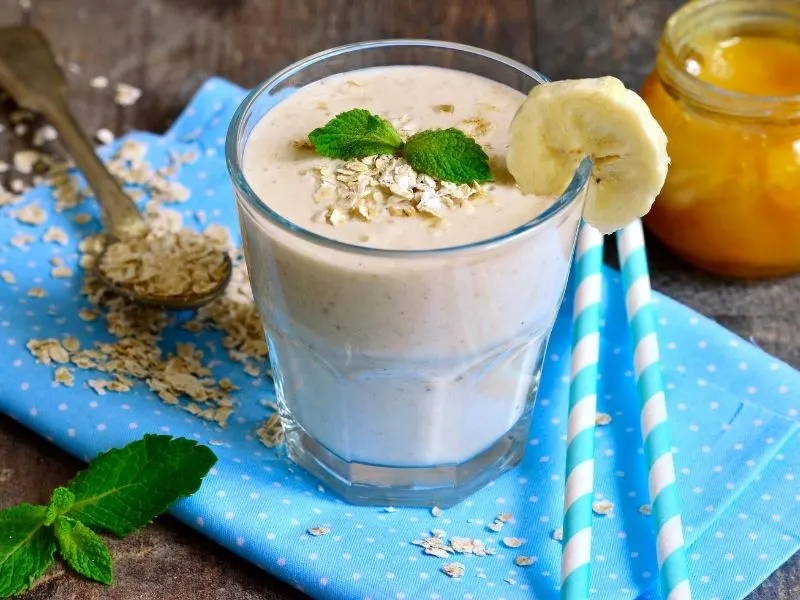
If you find that your homemade smoothies are not quite sweet enough, there are a few simple ways to add some extra sweetness.
One option is to add a ripe banana to your recipe. Bananas not only add sweetness but also creaminess and body.
Another option is to add a tablespoon or two of honey or agave nectar.
You can also add some chopped dates for sweetness and extra fibre.
Finally, if you want to avoid adding sugar altogether, you can try using fresh or frozen fruit
Adding Herbs Or Spices To A Smoothie
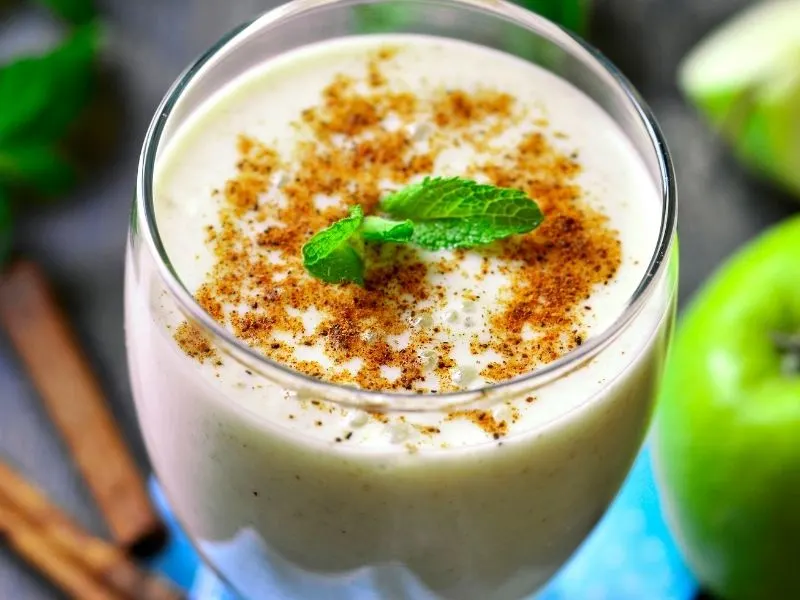
A smoothie is a great way to get your daily dose of fruits and vegetables, but it can sometimes be a little bland.
One way to spice up your smoothie is to add herbs or spices. Just a pinch of something like ginger, cinnamon, or nutmeg can really enhance the flavour.
Not only will this make your smoothie more delicious, but it can also boost its nutritional value.
The Best Blender For Making Smoothies

There are many blenders on the market, but not all of them are well suited for making smoothies. When choosing a blender for smoothies, it’s important to consider factors such as power, blade type, and capacity.
For instance, a high-powered blender with sharp blades will be able to quickly and easily pulverize fruits and vegetables into a smooth consistency, as well as being able to crush ice cubes.
Popular blender brands for smoothies include Ninja, NutriBullet and Breville.
Related: Smoothie Maker Buying Guide
Making It – Step By Step
Step 1: Choose your liquid base
You can choose from a wide variety of liquid bases, depending on what kind of smoothie you are making. Choose from;
Coconut water
Plain water (tap or filtered)
Milk
Dairy free milk such as soya, almond, rice, hazelnut, oat etc
Fruit juice (go for freshly squeezed and limit your fruit juice owing to the concentrated sugar content)
Green tea, fruit tea or any caffeine free tea
Step 2: Add your fruit
You can add fresh or frozen fruit. The more frozen fruit you add the more liquid you will need to thin it down. If you want a thick smoothie add more ice, frozen fruit or a fruit with less water content.
Choose from any fruits you fancy, the creamier ones that will produce a thicker consistency include banana, mango, peaches and passion fruit. Those with more water content include watermelon, oranges, pineapples and grapefruit.
Step 3: Add something green
If you want to turn it into a green smoothie add in some spinach, kale or spring greens.
Step 4: Add in some extras
You can really experiment here, add in some ingredients to make your smoothie thicker or boost it with something nutrient intense.
For thickeners add in yoghurt, avocado, ice or oats.
For a taste twist choose from a pinch of cinnamon, ginger, vanilla, seeds, nuts or herbs.
Step 5: Do you want it sweeter?
If you have a sweet tooth you might want to add a dash of something to sweeten it up. It will of course depend on whether you have used particularly sweet fruits already (or fruit juice as a base). Choose from maple syrup, honey, dried fruits.
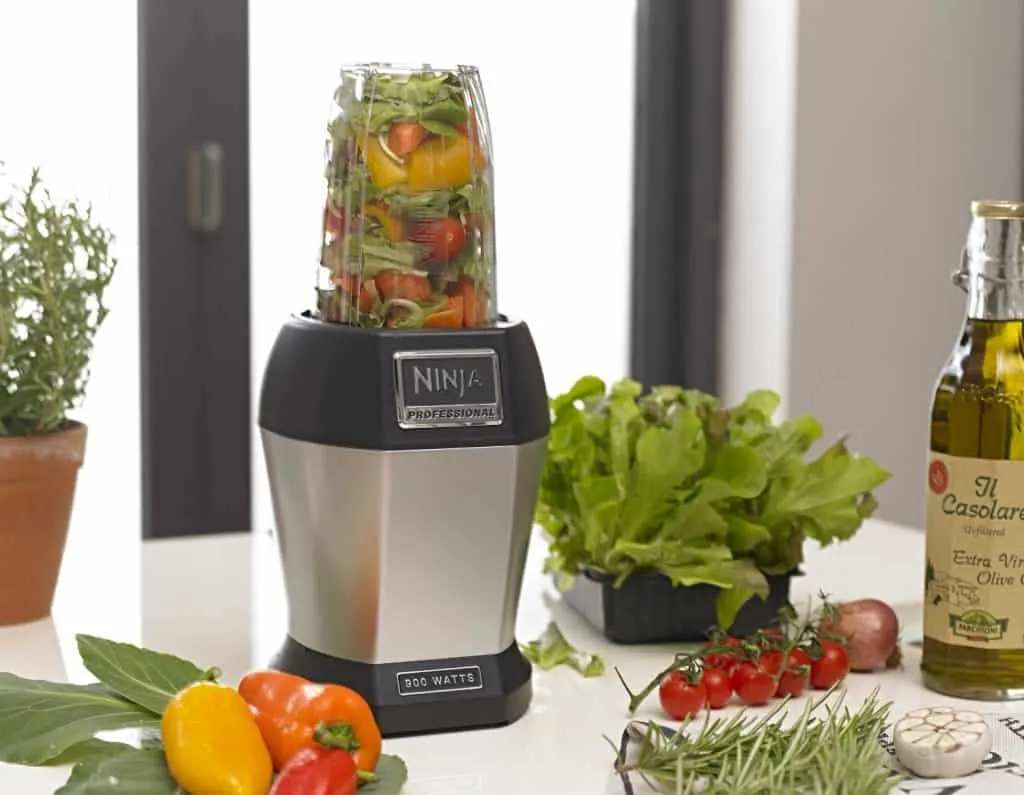
A smoothie mixes all the ingredients together, including the pulp and thus fibre. Some high speed blenders can blend up harder ingredients such as nuts, seeds and tougher skins. This means none of the nutrients are lost and the fibre, also a vital nutrient, is consumed. Fibre is needed to keep our digestive system healthy and keep constipation at bay. Smoothies can be made to be a meal in themselves – especially when you add in extras such as nuts and oats which will keep you feeling fuller for much longer than a juice would.
What equipment do I need to make a smoothie?
Really you just need a blender, sometimes called a smoothie maker. Which blender you buy will very much depend on how often you want to make smoothies and what you want to blend. They vary considerably in both price and power. Blenders with less powerful motors are still very capable of making smoothies and make great starter models owing to their budget price tag.
Does my fruit need to be ripe before I can blend it?
It doesn’t need to be ripe but it will taste much better if it is! When a fruit is at it’s peak ripeness it will not only be softer but it will be sweeter, making it taste much nicer. Test for ripeness by gently squeezing it, if it feels slightly soft it should be good to blend.
Can I include frozen ingredients in my blender?
Absolutely. Check with the manufacturer’s recommendations to make sure your blender can take frozen ingredients but most of the high-speed blenders are more than capable.
I actually prefer to use frozen ingredients as it means I can always have my favourites available when they are needed. It cuts down on waste (how many times have you had to throw out squidgy ingredients from the fruit bowl?!) and I can cut out the need to add ice cubes. You might find that you need to add more liquid or wait for the smoothie to defrost a little to make it more drinkable.
Many of the main supermarkets are now catering for the smoothie market by selling a variety of frozen ingredients chopped up and ready to throw in. I was especially excited to discover frozen avocado halves in my local supermarket – no more waiting for the perfectly ripe avocado!
Tip: If you are freezing bananas make sure you peel them first and chop them up. Store them in freezer bags.
Can I store my smoothie and drink it later?
Yes, you can. Personally, I like to try and drink them as fresh as possible but it’s not always viable.
If you find it easier to make them in advance or you need to take one to work to drink later you can blend it up and then pour it into an airtight container such as a thermos flask. A lot of the personal mini blenders allow you to detach the cup you blended the smoothie in and keep it in there. If you can keep the smoothie cool it will retain more of its nutritional health benefits, and also taste much better. Adding a little squeeze of lemon juice will help to keep the smoothie fresher and not turn brown.
Tip: If you are short on time in the morning prepare the ingredients the night before – store them in a food bag in the freezer and you’ll be ready to blend and go in the morning!
Do I need to use organic ingredients?
Using locally organic grown ingredients is always my first choice, but it’s not always practical – both logistically and financially.
Below is a list of recommendations from the Pesticide Action Network (UK) of the products you should prioritise when buying ingredients. Some items contain more pesticides than others; these are the ones you should be buying organic when choosing ingredients for your smoothie.
According to PAN, these are the worst offenders for pesticide residue;
1. Oranges
2. Lemons and limes
3. Pears
4. Grapes
5. Apples
6. Pre-packed salads
7. Bananas
8. Spring greens
9. Kale
10. Herbs
11. Spinach
12. Cucumber
Juice vs Smoothies
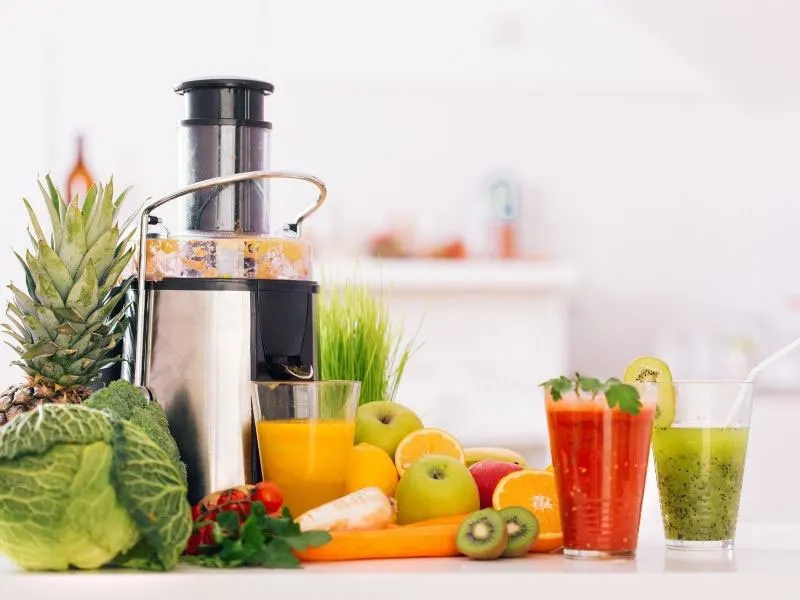
The difference between juices and smoothies is the way they are made.
Essentially a juice is made by extracting the juice from a fruit or vegetable and discarding the fibre. Juicing is a popular way to get nutrients into our bodies at top speed, enabling us to absorb them much faster than a smoothie.
With juice, the body doesn’t need to work at digesting and breaking down fibre and bulkier food items. The nutrients can reach the necessary destinations almost instantly rather than taking hours.
This is why juice detoxes are so popular, the idea is that your body is given a break from breaking down foods. Meals are substituted with juices for anything from 1 day to some juice detoxes which last for up to 28 days! To make a juice a citrus press or juicer appliance is needed.
How can I make a smoothie taste sweeter?
Avoid using sugar when making a smoothie. The fruit you add to a smoothie will have plenty of natural sugar already.
If you have made a green smoothie and are struggling to enjoy the taste why not add a pinch of cinnamon or even some maple syrup to make it more palatable? When I made my first green smoothie I struggled with the taste but by adding the juice of half a lemon or lime I soon got used to it and have now grown to love them!
What is a green smoothie?
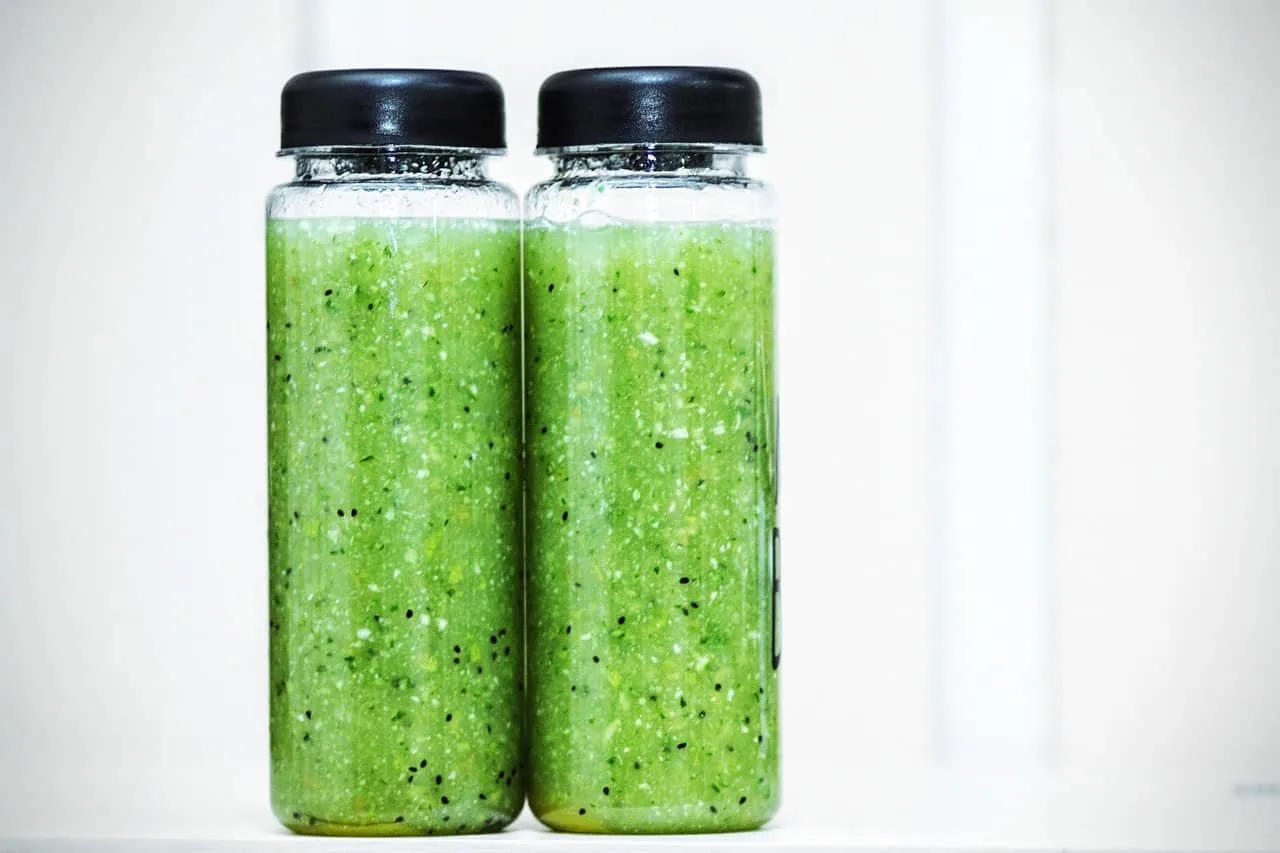
A green smoothie is anything that contains dark green leaves, usually mixed in with fruits and a liquid base. I usually go for slightly more fruit than green leaves. I usually like to add an extra boost to the smoothie by adding some seeds.
MY FAVOURITE GREEN SMOOTHIE RECIPE
1 cup (30g) of spinach
1 cup (230ml) coconut water
1 cup (medium) banana
½ cup (50g) frozen mixed berries
1 tbsp flaxseeds (optional boost)
What liquid can I put in a smoothie?
The best and simplest is just plain still water. But sometimes you might want to create a creamier texture, a different taste or gain more nutritional benefits. You can add pretty much any liquid, try any nut milk, soya milk, coconut water or freshly squeezed fruit juices. If you are using fruits with high water content (especially watermelon) you might want to add less liquid.
I don’t/can’t drink dairy – what is a good alternative?
There are plenty of choices if you are lactose intolerant or just prefer to limit your dairy consumption. Soya is a great natural plant-based alternative and is a fantastic source of quality protein. Nut milk can add a healthy boost and give the smoothie a tasty twist. Almond milk is a favourite, it is low in fat and calories and high in the B vitamins as well as vitamin E.
How can I change the consistency of my smoothie?
What ingredients you use will affect the consistency and texture of your smoothie. If you are after a thicker and creamier smoothie include fruits with soluble fibre such as avocado, mango and banana. Using frozen fruit will also help create thicker smoothies as well as make your drink taste deliciously chilled. A creamy liquid base option are any of the nut milks, coconut milk or dairy milk. Chia seeds are a popular choice for not only thickening up drinks but also for their nutritional value.
Find out more about the health benefits of seeds here.
Super supplements to add to any smoothie
You can instantly boost any smoothie by adding some supplements for extra nutritional value;
Flaxseeds are full of essential fatty acids as well as a great source of iron, zinc and magnesium.
Wheatgerm is high in vitamins B and E as well as high in fibre and healthy fats. It is also a great source of magnesium, zinc and potassium.
Mixed seeds are great to add to a smoothie. You can choose which ones to put in, or buy a mixed seed mixture from the supermarket. Seeds tend to be rich in omega 3 and 6 fatty acids as well as being great sources of fibre and protein.
Spirulina is sold in powder form in health shops and some supermarkets, although you might find it more economical to buy online. Spirulina is made from blue-green algae and contains high levels of vitamin B-12. It also has the highest concentration of protein out of any known food. It contains all of the 8 essential amino acids required for your health. Make sure you are buying a high quality spirulina that hasn’t been over processed. Spirulina can take a bit of getting used to; start by adding small amounts, like ½ a teaspoon, and gradually work your way up to larger amount of around 1-2tsps in a day.
Wheatgrass can also be bought in powder form from most health shops and online. It contains all the B vitamins as well as being a complete source of protein.
Chia seeds not only make a smoothie thicker, they also make a great energy booster. They contain omega 3 essential fatty acids as well as protein, fibre, antioxidants and calcium. Chia seeds can help you feel fuller for longer by expanding in your stomach once consumed.
Can I make an ice lolly (popsicle) from a smoothie?

You certainly can – and they taste great! Just use a mould (plastic or silicone) and pour any smoothie drink into it. Freeze for a few hours or until solid. I love freezing fruit smoothie with berries for a tasty but healthy dessert treat.
Can I lose weight by drinking smoothies?
You certainly can lose weight, but only if you drink the right weight loss smoothies. Some are so full of calories you might consume a huge amount of your suggested intake without realising it.
A popular way to lose weight with smoothies is to have one as a meal replacement. I like to have one for breakfast and/or lunch and then have a clean unprocessed dinner (chicken/turkey with vegetables/salad). Try and aim for a more vegetable heavy smoothie and add in some ginger or lemon to make it more palatable.
MY FAVOURITE WEIGHT LOSS RECIPE
20g spinach
20g kale
1 inch cucumber
½ inch fresh root ginger
1 tsp apple cider vinegar
200ml coconut water
2 to 3 ice cubes
Method: Mix the kale, spinach and coconut water until smooth. Add the rest of the ingredients and blend until smooth.
Calories: 72
